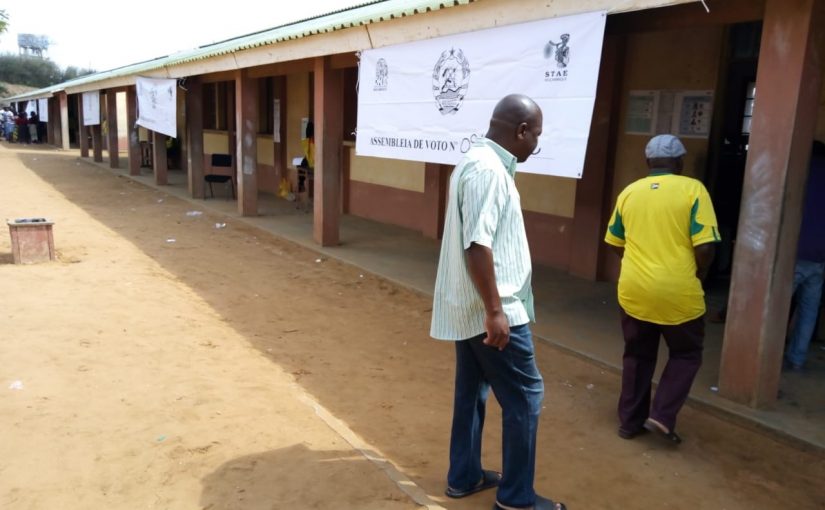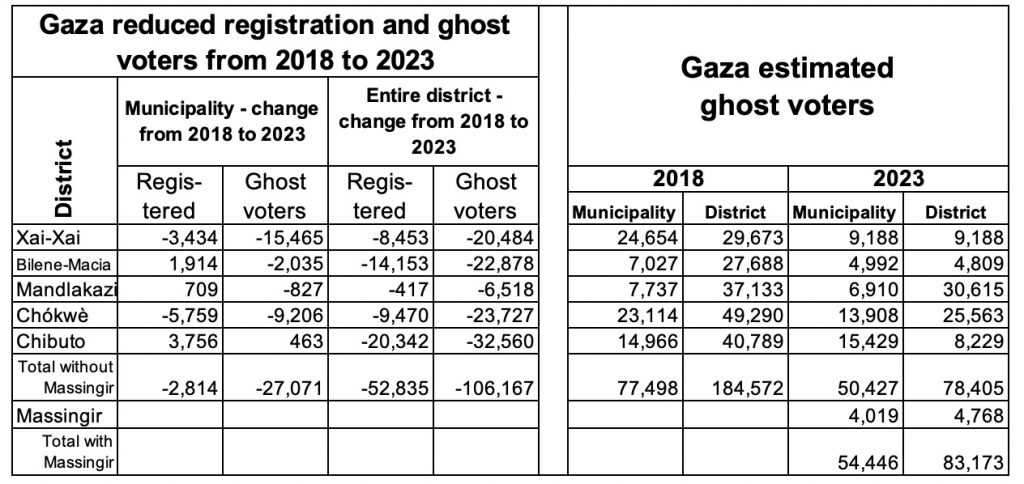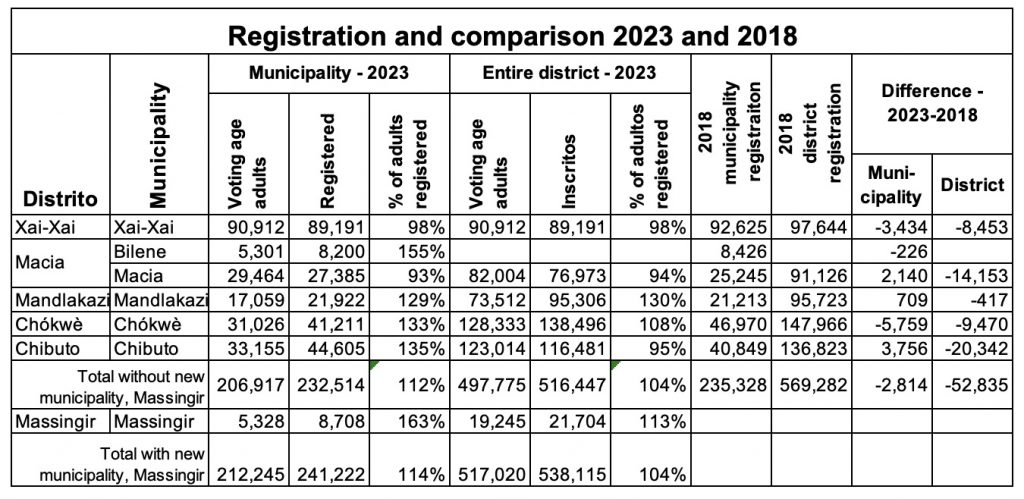Anamola wants a new political system in Mozambique, with prime minister as head of government among ...
CIP Mozambique Elections: Are Gaza ghosts refusing to vote?

File photo: CIP
- Are people fleeing Gaza and Niassa?
- Or are the ghosts refusing to vote?
Registration in Gaza and Niassa this year is much lower than for the previous 2018 municipal elections. In the districts with municipal elections, Gaza registration fell by 52,835 compared to the previous municipal elections in 2018 – this is 10% of the voting age population of those districts.
In Niassa in municipalities, registrations fell by 26,284, again 10% of the adults in the municipalities. The big reductions in registration are in Lichinga (down 27,137) and Cuamba (down 8,766). Does this mean people are leaving Gaza and Niassa?
But in Gaza there are at least 106,000 fewer “ghost” voters than in the 2018 registration, which could suggest that it is the ghosts who are leaving or refusing to vote. Nevertheless, at least 83,000 ghosts registered to vote in Gaza this year. More than half those ghosts are in Mandlakazi (more than 30,000) and Chokwe (more than 25,000).
Gaza is notorious for ghosts voting. In the 2019 national elections, there were 1,166,001 people registered, which was 329,430 more people than the voting age population of Gaza, 836,581, according to the National Statistics Institute. Both the head of the National Statistics Institute and the head of the census were dismissed by President Filipe Nyusi for refusing to bend the census numbers to match the registration. Those extra ghost voters were enough to give Gaza three extra seats in parliament.
The photo above is of a set of polling stations in classrooms in Xai Xai, Gaza, on the morning of voting in national elections 15 October 2019. These polling stations reported very high turnouts at the end of the day, which would have required queues all day, especially in the morning when the photo was taken. Yet we can only see a few voters. The rest must be ghosts we cannot see, who can only be seen by certain polling station staff.
In this special report we calculate the ghost voters in Gaza and show the number is still very large, but considerably reduced from five years ago. Five of the seven municipalities registered an impossibly high number of voters this year: Massingir (163% of voting age adults), Bilene (155%), Chibuto (135%), Chokwe (133%), and Mandlakazi (129%). According to the very accurate data of the National Statistics Institute, these extra people do not exist – they are ghosts.
Registration is not just within in the municipality, but also in the entire district containing the municipality. (Therefore numbers for the total district include the municipality.) Gaza has seven municipalities in six districts (Bilene and Macia town are both in Macia district). Massingir is a new municipality this year, so we exclude it from comparisons between 2023 and 2018.


Because we cannot see them, we can only estimate the number of ghosts. The starting point is three CNE documents – the report submitted to the CNE of STAE Director General Lolo Correia on 28 June of registration this year, a 22 February 2023 report by STAE which include an INE 6 July 2021 letter to STAE with projections of district populations for people 18 years old and older for 2023 and 2024, and the 18 March 2020 CNE report giving the final results of the 2018 municipal elections which includes registrations.
CNE and STAE exaggerated population figures for 2018, but in response to protests, they have used INE figures of 2023 voting age population of districts. From that they estimate voting age voting age population for municipalities, and we can calculation what portion of the district population is in the municipality, which we accept. (For example, Xai Xai is a district, so 100%, which Chokwe town has just 24% of the adults of the district.)
From that, we can estimate voting age populations for 2018. INE gave voting age population for 2023 and 2024, which allows us to calculate the annual rate of increase of population (which varies considerably – Matola is growing by 4.5% per year while Mandlakazi is only growing by 2% per year). These growth rates can be used to look back, and estimate the voting age populations in 2018.
Finally, we note that electoral registration has always been high because ID cards and hard to obtain and voters cards are normally issues immediately and then c be used as ID cards. We estimate that, on average, normal registration is about 88% of voting age adults. So we assume that on average registrations above 88% of voting age adults are “ghosts”.
More details and the three cited documents are on: https://bit.ly/Moz-El-23-reg












Leave a Reply
Be the First to Comment!
You must be logged in to post a comment.
You must be logged in to post a comment.